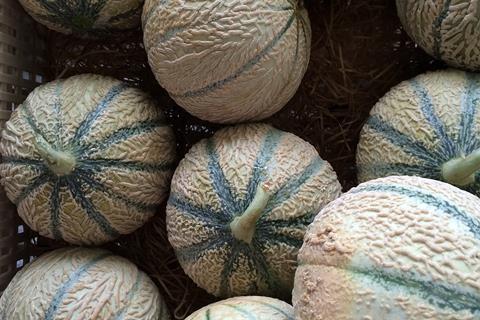Scientists at the U.S. Department of Agriculture have isolated a microbe that can prevent the growth of Salmonella enterica on cantaloupe melons during the pre- and post-harvest periods.

This bacterium, Pantoea agglomerans, is already used as a biocontrol agent against Erwinia amylovora, the causative agent of fire blight in apple and pear trees, but its efficacy against Salmonella enterica means it could potentially be used to prevent Salmonella enterica growth and persistence on produce.
The discovery was outlined by scientists at the U.S. Department of Agriculture, Agricultural Research Service, in their study ’Use of Pantoea agglomerans ASB05 as a biocontrol agent to inhibit the growth of Salmonella enterica on intact cantaloupe melons’, which was recently accepted for publication by the Journal of Applied Microbiology, an Applied Microbiology International publication.
Contaminated produce
Every year more than 45 million people in the United States contract bacterial foodborne illnesses, many of which are from fresh, ready to eat produce that can become contaminated with bacterial pathogens at any point from farm to table. For convenience, these time periods are often referred to as pre- and post-harvest.
“The prevention of pre-harvest contamination by pathogens is difficult and relies on strict adherence to good agricultural practices. The prevention/remediation of contamination during the post-harvest period relies mostly on chemical and physical methods,” said corresponding author Dr. Jeffrey McGarvey.
“One promising method to prevent contamination during both periods is biocontrol, the use of one organism to prevent the growth of another.
Screening isolates
“To identify possible bacterial biocontrol agents, we created a produce associated bacterial library containing around 8,000 isolates and screened them using an in vitro fluorescence based growth assay for the ability to inhibit the growth of Salmonella enterica in vitro.
Using this method, we identified a bacterium called Pantoea agglomerans that completely inhibited the growth of Salmonella enterica in vitro. We then inoculated cantaloupe melons with Pantoea agglomerans and found that it could grow, persist, and inhibit the growth of Salmonella enterica on cantaloups in both pre- and post-harvest environments.
To determine the mode of action of Salmonella enterica growth inhibition, we performed transposon mutagenesis and discovered an operon that encodes the biosynthetic machinery to produce a phenazine type antibiotic.
Biocontrol agent
The identification of Pantoea agglomerans as a promising biocontrol agent surprised Dr. McGarvey, who said: “Although Pantoea agglomerans has been used for decades as a biological control agent to prevent the growth of Erwinia amylovora, the causative agent of fire blight in apple and pear trees, we did not expect it to be able to inhibit Salmonella enterica growth.
“The use of Pantoea agglomerans as biological control agent to prevent produce contamination by Salmonella enterica represents an additional tool for use in food safety that may be useful under some circumstances.
”For example, California, USA produces 100% of the north American and over 90% of the world’s supply of almonds. Almond orchards have been shown to harbor Salmonella enterica that are able to persist in them for years and can result in the contamination of the almonds.
Promise for almonds
”At present there is no method to prevent Salmonella enterica from contaminating almond orchards nor to eliminate them once contamination has occurred. As a result, all almonds sold in north America are pasteurized using heat or chemical methods.
”The use of our biocontrol agent may be able to rid orchards of Salmonella enterica, which would reduce foodborne illness and save the almond industry a substantial amount of money.”
The next step in this project will be to carry out pre- and post-harvest trials on produce that is subject to Salmonella enterica contamination, such as almonds and melons to determine the real-world suitability of this biocontrol agent.
Jeffery McGarvey led the team of scientists consisting of Sang In Lee, Thao Tran, and Robert Hnasko. The work was supported by the United States Department of Agriculture, Agricultural Research Service, National Program 108 Food Safety (animal and plant products). The paper, ’Use of Pantoea agglomerans ASB05 as a biocontrol agent to inhibit the growth of Salmonella enterica on intact cantaloupe melons’, appears in Journal of Applied Microbiology [LINK], an Applied Microbiology International publication.







No comments yet